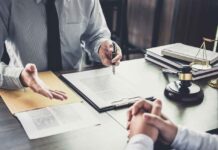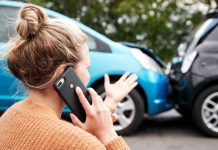Car accidents can be a stressful experience that leaves drivers and passengers uncertain about what to do next. One of the key concerns following an accident is determining who is responsible, as this will affect who covers the damages and medical costs. Understanding liability can help you protect your rights and ensure that the proper party is held accountable.
Let’s explore how to determine car accident liability, what factors play a role, and what you should do if you find yourself in this situation.
Understanding Liability
Liability in a car accident refers to the legal responsibility for the incident. In simple terms, it’s about who caused the auto accident and, therefore, who should pay for the damages. In this instance, a car accident lawyer knowledgeable of car accident laws in Tuscaloosa or in your place can help establish liability, which is essential because it determines whose insurance company will cover the expenses or if you may need to seek compensation from the other party directly.
When assessing liability, the general rule is that the negligent driver—meaning they didn’t follow traffic laws or acted carelessly—is usually the one found at fault. However, determining negligence isn’t always straightforward and can depend on multiple factors.
Common Factors That Affect Liability
Several key factors are considered when determining who is at fault in a car accident. Let’s break down some of the most common:
Traffic Violations
If one of the drivers broke a traffic law—such as speeding, running a red light, or failing to yield—this can heavily influence liability. In many cases, violating traffic rules puts the violator at fault for the accident. Police reports and witness statements often help establish whether any traffic violations occurred.
Rear-End Collisions
In rear-end collisions, the driver of the vehicle that hits another from behind is often considered at fault. The reasoning is that drivers should leave enough space to stop safely, even if the car in front makes a sudden stop. However, there are exceptions. For example, if the driver in front behaved erratically, such as by making an unsafe lane change, this might shift some of the blame.
Left-Turn Accidents
Accidents that occur when a driver makes a left turn are frequently the fault of the turning driver, as they are supposed to yield to oncoming traffic. If the oncoming driver was speeding or ran a red light, though, they may also share some liability.
Road Conditions
Poor road conditions, such as icy or wet surfaces, can contribute to an accident. However, drivers are expected to adjust their driving to the conditions. Failing to do so may result in them being found partially or entirely liable. For example, if a driver is speeding on a wet road and loses control, they would likely be held responsible, even though the road was slippery.
Determining liability often depends on various factors, such as traffic violations or road conditions, and can vary with each situation. Understanding these common factors helps clarify how fault is assigned in car accidents.
Role of Insurance in Liability
After an accident, determining liability also plays a crucial role in how insurance companies handle claims. In “fault” states, the driver found at fault is responsible for covering the damages through their insurance. In contrast, “no-fault” states require drivers to file claims with their own insurance, regardless of who caused the accident. Knowing which type of system applies in your state is important.
Insurance adjusters will review the police report, gather statements from witnesses, and examine any available evidence, such as photos or video footage, to help determine fault. Their findings influence whether the insurance company accepts or disputes liability.
What To Do After a Car Accident
Knowing what to do immediately following a car accident can protect your rights and help with determining liability later. Here’s a simple guide:
1. Gather Evidence
At the scene of the accident, it’s important to document as much as possible. Take photos of the vehicles, the location, any visible damages, and road conditions. If there are witnesses, ask for their contact information and if they’re willing to provide a statement.
2. Call the Police
Having a police report on file is crucial. The report can serve as an official record of the incident and will likely include the officer’s opinion on who was at fault. Even if the accident seems minor, having a police report can help resolve disputes later on.
3. Avoid Admitting Fault
Be cautious with your words at the accident scene. While it’s important to cooperate, you should avoid making statements like “I’m sorry” or admitting fault. These statements can be used against you when liability is being determined.
4. Seek Medical Attention
Even if you don’t feel injured immediately after the accident, it’s a good idea to get checked by a doctor. Some car accident injuries may not show symptoms right away, and having a medical record can be important for any future claims.
Taking the right steps after a car accident is essential for protecting your rights and ensuring liability is determined fairly. By following these guidelines, you can help strengthen your car accident case and avoid potential complications down the road.
Conclusion
Determining car accident liability can seem complicated, but understanding the factors that come into play can help you navigate the process more confidently. Whether it’s a violation of traffic laws, road conditions, or other elements, having the right information and evidence is crucial. Taking the right steps after an accident, such as gathering evidence, avoiding admissions of fault, and contacting the police, can significantly impact how liability is determined. Knowing your rights will ensure that you are protected and that the responsible party is held accountable.






